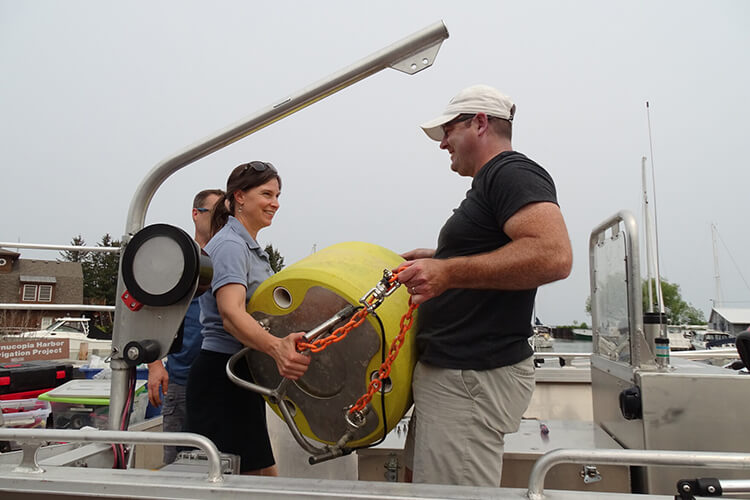By Susan Bence
WUWM 89.7 FM
August 3, 2021
Toxic algae is nothing new to the Great Lakes. Just think of Lake Erie and the bay of Green Bay.
But the last place many people, including scientists, expected to find the harmful stuff is in Lake Superior. That’s because it’s cold, deep and mostly surrounded by forest, not farm fields.
Agriculture is a common culprit — its runoff fuels toxic algae. But sporadic blooms have appeared in Lake Superior, mostly along its southern shore.
This summer, a slew of scientists are converging to try to figure out why the algae is appearing in Lake Superior and to learn whether science can help control what, so far, has only been an occasional nuisance.
It’s a calm, clear morning in Ashland, Wisconsin along Lake Superior’s southern shore. Water scientist Matt Hudson and a couple of his Northland College students are heading out to gather water samples on Chequamegon Bay.
They’ll sample each site six times over the summer to try to figure out what makes for a welcoming environment for toxic blue-green algae.
One of Hudson’s tools is a long tube-like instrument, stocked with sensors. “We just lower this thing down into the water and it gives us a whole profile of the water quality from the surface to the bottom,” he explains.
To the west, off the shore of Cornucopia, University of Wisconsin-Milwaukee researcher Todd Miller’s lab is lending its toxin analysis expertise to Lake Superior researchers.
Miller has deployed a system his students helped design, anchoring it off Meyers Beach — one of the most popular spots within the Apostle Islands National Lakeshore.
That’s where National Park Service aquatic biologist Brenda LaFrancois points it out…Read the full article.
